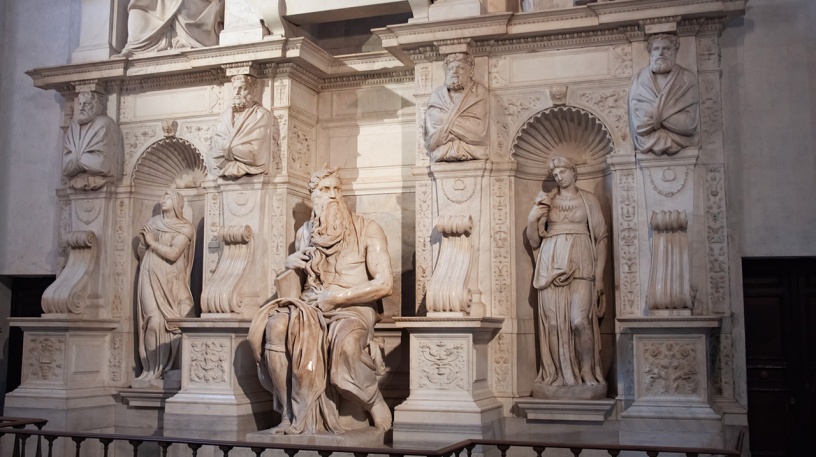Buongiorno and welcome to RomeCabs travel blog! Tucked away on the Oppian Hill near the Colosseum, the Saint Peter in Chains Basilica (San Pietro in Vincoli in Italian), Rome’s hidden marvel stands as a testament to centuries of history, art, and religious significance. Best known for housing Michelangelo’s awe-inspiring statue of Moses, the basilica holds a remarkable tale of miraculous chains, legendary relics, and artistic masterpieces.
.
History of Saint Peter in Chains Basilica
.
The roots of Saint Peter in Chains Basilica, originally named the Basilica Eudoxiana, trace back to the early 5th century. Rebuilt between 432 and 440 AD, the basilica was erected on ancient foundations to house a relic of profound significance—the chains believed to have bound Saint Peter during his imprisonment in Jerusalem. This relic, known as the “Liberation of Saint Peter“, became a focal point for the Christian community and a symbol of divine intervention.
.
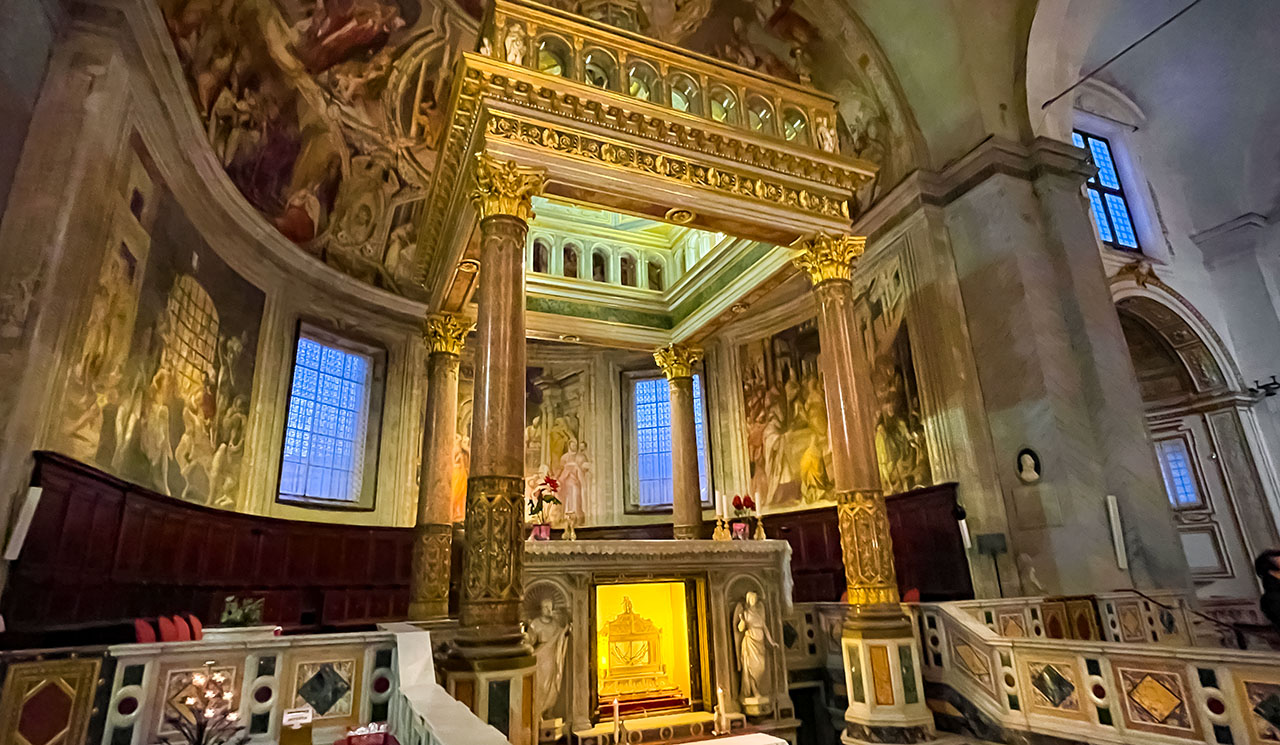
.
The story takes a fascinating turn when Empress Eudoxia, the wife of Emperor Valentinian III, presented these chains as a gift to Pope Leo I. According to legend, as Pope Leo compared these chains to those from Peter’s final imprisonment in the Mamertine Prison in Rome, a miraculous event unfolded—they fused together. This extraordinary occurrence elevated the relic’s status and prompted the construction of the basilica as a sacred sanctuary to house the now-united chains.
In 439, Pope Sixtus III consecrated the basilica, marking it as a place of deep religious significance. Over the centuries, Saint Peter in Chains church underwent several renovations and enhancements, each contributing to the basilica’s grandeur and historical importance.
One of the most notable periods of reconstruction occurred between 1471 and 1503, under the diligent efforts of Cardinal Della Rovere. This cardinal, who would later ascend to the papacy as Pope Julius II, played a pivotal role in reshaping the basilica. The front portico, attributed to Baccio Pontelli, was added in 1475, and the cloister, attributed to Giuliano da Sangallo, was constructed between 1493 and 1503. These additions, made during the Renaissance, reflected the artistic and architectural trends of the time.
The 18th and 19th centuries witnessed further restorations under the guidance of Pope Adrian I, Francesco Fontana, and other influential figures. These efforts aimed not only to preserve the historical integrity of the basilica but also to adapt it to the evolving styles and needs of the times.
.
Interior and Art
.
Saint Peter in Chains Basilica boasts a captivating interior with a nave and two aisles, adorned with antique Doric columns and cross-vaults. The 18th-century coffered ceiling, frescoed by Giovanni Battista Parodi, depicts the Miracle of the Chains, illustrating Pope Alexander healing Saint Balbina with the chains that once bound Saint Peter.
.
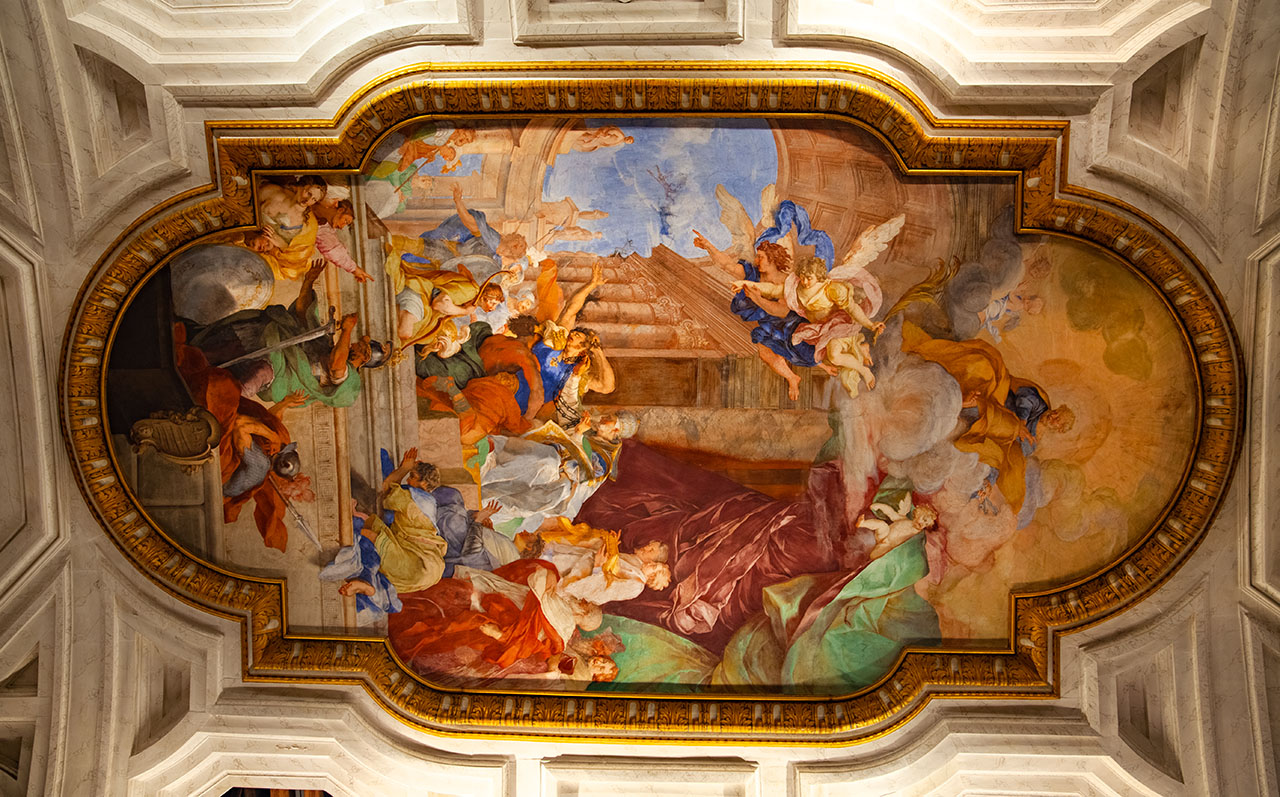
.
Other notable works include two canvases by Guercino, a monument to Cardinal Girolamo Agucchi designed by Domenichino, and a fresco depicting the Liberation of St. Peter by the same artist. Cristoforo Roncalli’s Deposition graces the first chapel on the left, and Antonio del Pollaiuolo, known for adding figures to the Capitoline Wolf, rests at the entrance.
.
Michelangelo’s Moses
.
Undoubtedly, the crowning jewel of San Pietro in Vincoli is Michelangelo’s transcendent masterpiece—Moses. Commissioned as part of a grand funeral monument for Pope Julius II, this colossal statue has left an indelible mark on the world of art and religious symbolism.
..
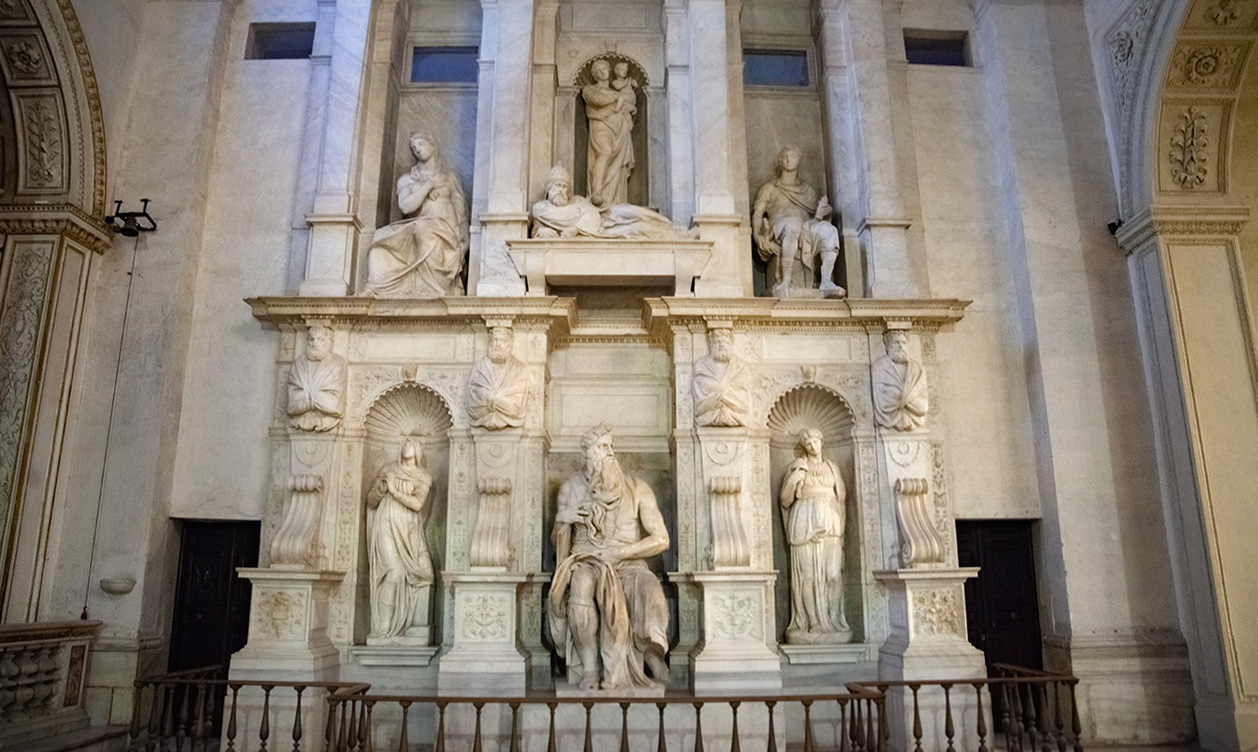
.
Completed in 1515, Michelangelo’s Moses was initially conceived as part of a massive 47-statue, free-standing monument to commemorate the life and legacy of Pope Julius II. However, due to a series of historical and logistical challenges, the full monument was never realized as originally envisioned. Instead, Michelangelo’s Moses found its eternal home as the centerpiece of the della Rovere family’s tomb within the confines of Saint Peter in Chains Basilica.
The statue captures the biblical figure of Moses in a moment of profound contemplation and authority. Michelangelo masterfully portrays Moses seated, holding the Tablets of the Law with his right hand while his flowing beard and commanding gaze convey a sense of divine inspiration and wisdom. Notably, Moses is depicted with horns on his head, a choice that has sparked theological discussions and interpretations.
.
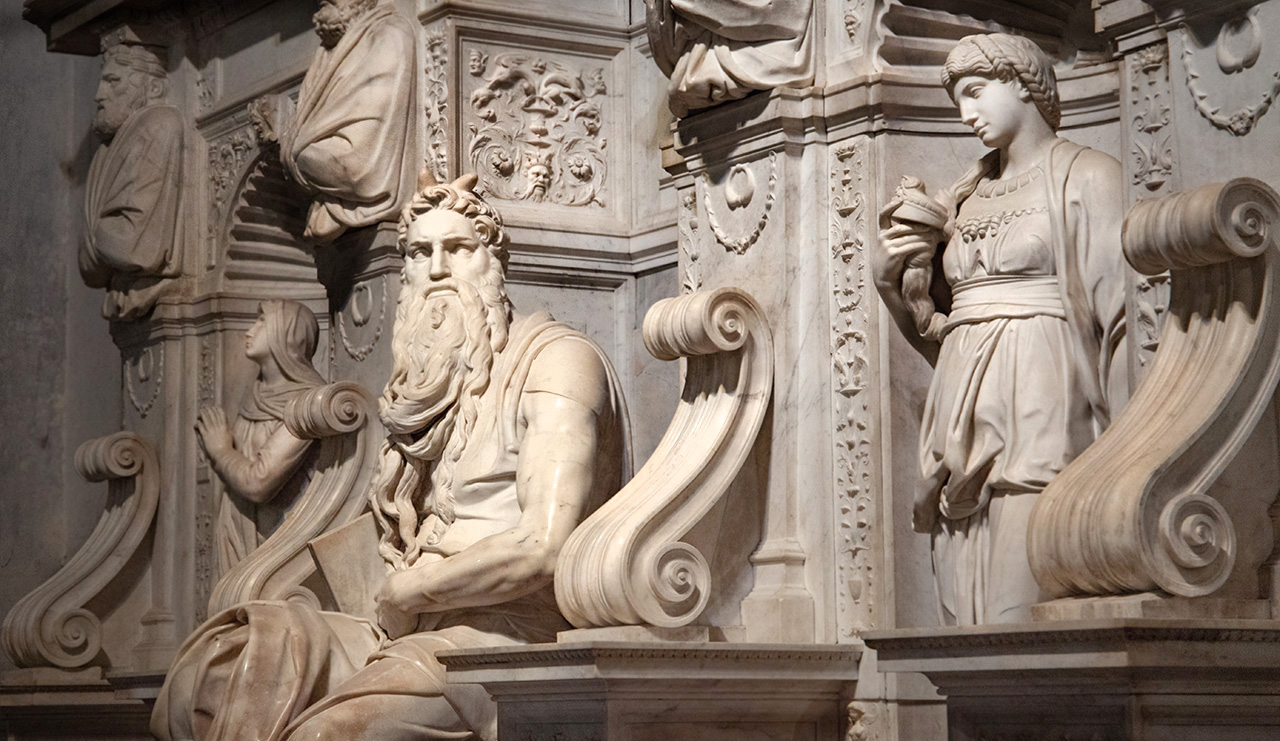
.
The horns on Moses’ head are symbolic rather than literal. They represent “the radiance of the Lord“, drawing inspiration from a linguistic nuance in the Hebrew Bible. In Hebrew, the words for “beams of light” and “horns” share a similar root. As a result, when translating the Bible into Latin, Jerome’s Vulgate version inadvertently depicted Moses with horns. This iconographic symbolism was common in early sacred art, and for artists, horns were easier to sculpt than rays of light.
While the horns sparked some initial controversy, Michelangelo’s Moses is now celebrated as a masterful interpretation of the biblical narrative and a testament to the artist’s unparalleled skill. The statue’s powerful presence within the basilica adds a layer of spiritual depth, drawing visitors into a contemplative encounter with one of the most iconic sculptures of the Renaissance.
As visitors stand before Michelangelo’s Moses in Saint Peter in Chains Basilica, they are not merely witnessing a work of art; they are immersed in a profound exploration of faith, artistic genius, and the enduring legacy of one of the greatest sculptors in history
.
Tombs and Discoveries in Saint Peter in Chains Basilica
.
In 1876, archaeologists unearthed tombs believed to be of the seven Maccabean martyrs, commemorated each year on August 1. Though the authenticity is debated, the discovery adds an intriguing layer to the basilica’s history.
.
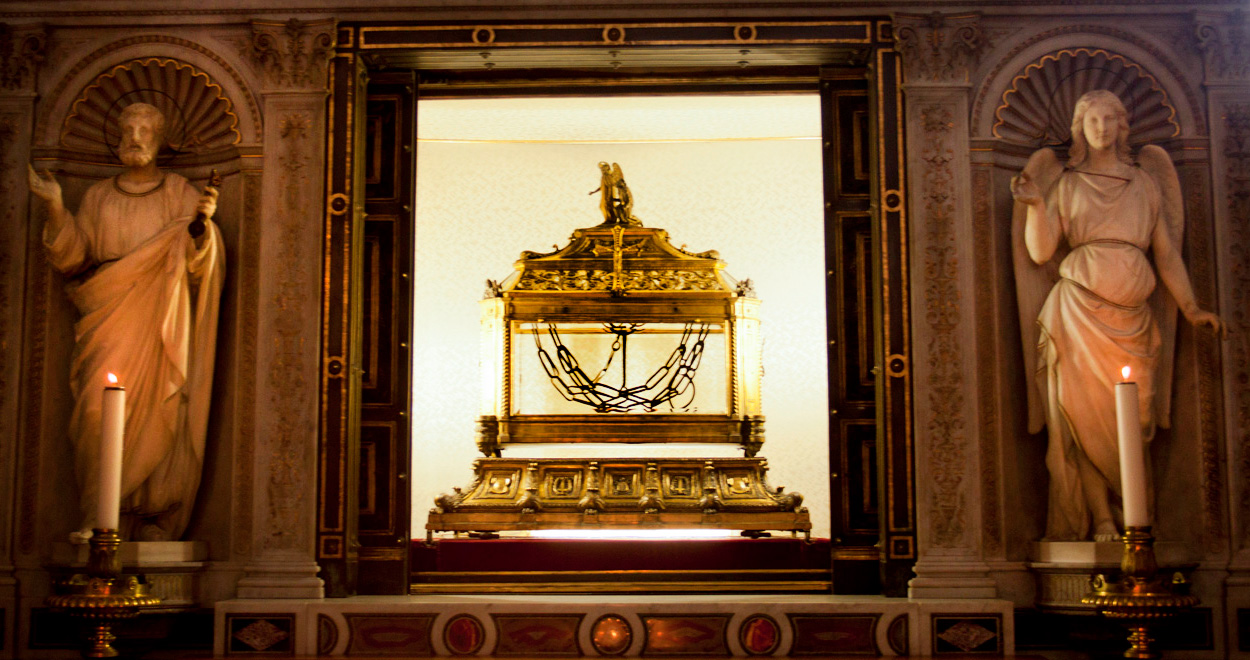
.
The left aisle features a seventh-century mosaic of Saint Sebastian, tied to a plague outbreak in Pavia. Sebastian’s relics were taken to Pavia, creating a parallel cult in both regions, symbolizing the enduring connection between Pavia and Rome.
San Pietro in Vincoli stands as a testament to Rome’s rich history and art. From the miraculous chains to Michelangelo’s Moses, each element contributes to the basilica’s allure, inviting visitors to explore the depths of its religious and artistic significance. This hidden gem that graces the Oppian Hill, remains an essential stop for those seeking to unravel the fascinating layers of Rome’s cultural heritage.
Location: Piazza di San Pietro in Vincoli, 4/a
Opening Hours: 8 AM to 12:30 PM, 3 PM- 6 PM
.DISCOVER MORE:DISCOVER MORE:D
DISCOVER MORE from RomeCabs Travel Blogs:
* Sant’Ignazio Church’s Fake Dome and Frescoes in Rome
* Piazza Navona in Rome: The Remarkable Story of its Unique Shape
* TOP 7 ROME AND ITALY TRAVEL TIPS
* Why are the Spanish Steps so Famous?
* Your Roman Holiday: How to Make Your Rome Visit Extraordinary
* Find us online also on:
